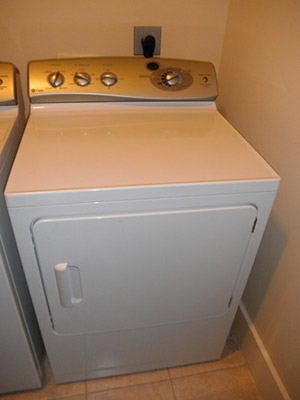How To Tell If Your Dryer Heating Element Is Out
You Are Here: Home > Automatic Appliance Parts Blog > How To Tell If Your Dryer Heating Element Is Out
*** Please be aware that Norridge is the only shipping facility. Inventory on-hand at all other branches is unavailable for immediate shipment. ***
When something goes wrong with your dryer, it can disrupt the entire workflow in your home. You must have clean clothes, and going to the laundromat to do your laundry is a headache — it takes extra time and expense, especially if you notice you keep running your dryer multiple cycles to get your clothes dry.
Sometimes people might not be sure what, if anything, is wrong with their dryer. It's essential to know what to look for when the heating element of your dryer is going bad, so you can fix it promptly. You may need to hire a repair person; other times, you can manage the fix on your own if you can easily access the right parts. Let's take a look at how the heating element works and what common signs you might notice if your heating element no longer works on your dryer.
Mechanics of an Electric Dryer
When you think of a dryer, you might just think about pushing a button and, in a little while, pulling out your warm, clean clothes. However, there is a lot that goes into getting those clothes dry.
Electric dryers consist of heating coils that are similar to those that heat up water heaters or ovens. When you turn the dryer on, it sends an electric current to the coil, which creates resistance buildup. The buildup consists of electrons that make heat. As these electrons heat up, they naturally cause the coils to get hot. This heat energy is transferred by a fan to the clothes in the dryer.
When your heating element is not working properly, your clothes will feel damp at the end of a cycle. Of course, if you overload your dryer with all heavy jeans, it may take more than one cycle to dry them, but typically, you should expect your clothes to be dry after one cycle.
How to Check the Heating Element on Your Dryer
Since there can be a few different things that might go wrong with an electric dryer, it's helpful to know ways to check whether or not the heating element is the problem. That way, you can either attempt to replace it yourself or at least save money by skipping a service technician's diagnosis.
Before getting started, make sure you unplug your dryer for safety reasons. You also need to pull your dryer out and disconnect the other wire that is connected to your dryer to protect from any shocks. If you want to be extra safe, you can always turn off the circuit breaker, too.
Next, you're going to remove the screws that hold the back of the dryer panel. You may want to first place the dryer carefully on its front before doing that, so you can access it more easily. Once the back panel is removed, you'll see a large canister with screws. This serves as the cover for the heating element. Sheet metal screws hold on this canister, so remove those to gain access to the heating element.
Once you can see the heating element, you have a couple of options. If you notice any broken wires or damage to the element, then you have your answer right away. However, sometimes you might not see the damage with your eyes, but it still exists.
If you have a multimeter, you can connect that to the element to measure the ohms of resistance. Set the multimeter at 200 ohms of resistance and place the red and black leads on top of the heating element's leads. If your multimeter registers with a numerical value, then the heating element is okay. If it doesn't give you any reading, then you have solved your problem: it's the heating element. Finding the right heating element part is the next step in making sure you get your dryer repaired right away.
Other Common Dryer Problems
Sometimes a dryer may not be sufficiently drying your clothes for other reasons. Not all the reasons are necessarily mechanical. Some reasons for the dryer not functioning at optimal performance include:
- The lint trap is full. If you get busy and forget to clean out the lint trap regularly, this will hinder the airflow, and the clothes won't dry properly. Fortunately, this is an easy fix.
- The dryer blower wheel is malfunctioning. The dryer blower wheel is what circulates the air over the heating element and out the air vent. When it goes bad, you will hear a lot of noise going on in the dryer.
- The thermal fuse is bad. The thermal fuse is one component on your dryer that keeps it from overheating, but if it's malfunctioning it can cause it to not heat up enough.
- The motor is defective. A motor is instrumental to any piece of equipment with moving parts. The same can be said with the dryer. If the motor is going bad, it won't turn the blower wheel, which, in turn, won't dry those clothes.
- The belt is broken. A belt acts as a pulley in the dryer. It's wrapped around the motor and the drum, so when it breaks, it won't heat up to dry your clothes. Even if the motor is still functional, it needs the belt to complete the job.
Next Steps
If your dryer is acting up, it's best to get to the bottom of it promptly. Ignoring the problem could make things worse. There are several reasons why your dryer may not be drying your clothes properly, but once you have diagnosed the issue, you can tackle the problem right away.
At Automatic Appliance Parts, we will ensure you have the exact parts you need — even if they are obscure and hard-to-find parts. On top of that, we will ship them to you speedily. No matter where you're located, you'll have your parts in three days or less. Get in touch with Automatic Appliance Parts or search our extensive database for the part you need today.

 Shopping Cart [empty]
Shopping Cart [empty]









